If you’ve been looking for a recipe of Rumali Roti that could be easily prepared at home, look no further. Here’s my recipe that’s going to be your best friend. With this recipe, you will be able to make near to perfect Roomali Roti and they are apt to be consumed with all your rich curries and gravies from the Mughlai, Awadhi, Punjabi or Hyderabadi cuisine. Also, the fact that you can make this special roti at home in the most hygienic environment, is more than enough. This is a vegan recipe too.
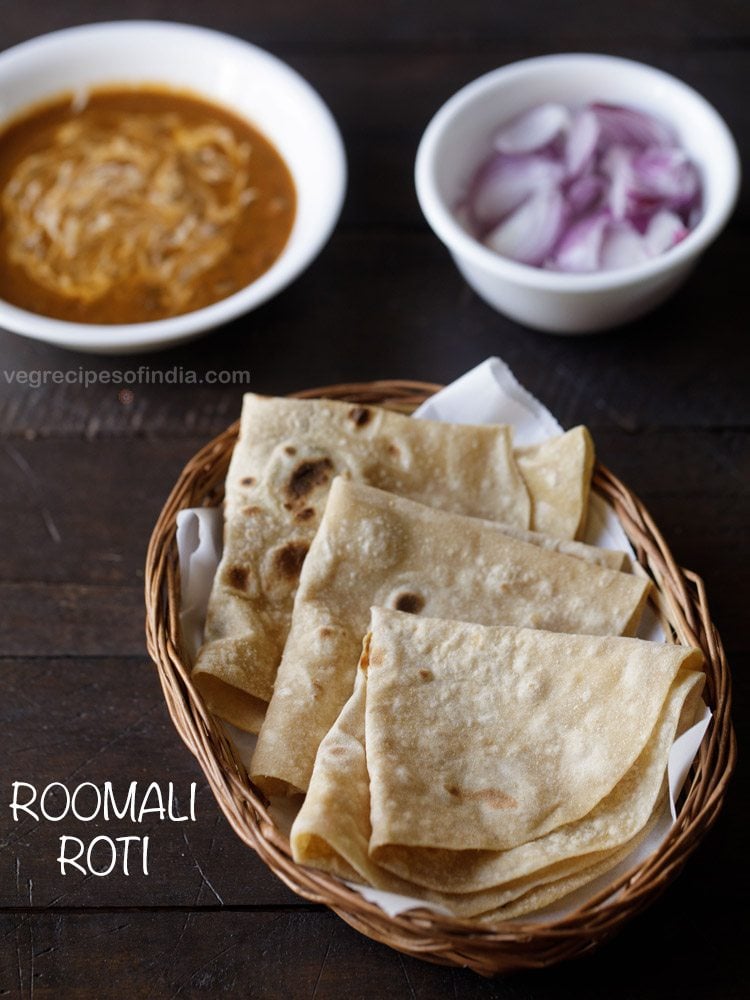
Table of Contents
What is Rumali Roti
If there’s one flatbread in India, which is as popular as the Naan, it is the Rumali Roti. I mean imagine dunking portions of this roti in your favorite curry or gravy or pairing it with a delicious tandoori dish, and having it. Isn’t this mention only enough to make you salivate?
So basically, a Rumali Roti is one of the well-known unleavened Indian flatbreads that traditionally belongs to the Mughlai, Hyderabadi or Awadhi food cultures. A lesser-known fact about this roti is that it is also known as ‘manda.’ Other names include the Punjabi ‘lamboo roti’ and even the Caribbean ‘dosti roti.’
The Hindi word ‘rumal/roomal’ literally translates to ‘handkerchief’ in English. Since, a Rumali Roti is a thin, soft flatbread that can be folded like a handkerchief; hence, these rotis are very aptly named so. This variety is also one of the most popular flatbreads served in almost any and every Indian restaurant, across the globe.
More on Rumali Roti
Generally, in restaurants, Rumali Roti is made with all-purpose flour (maida). When I was researching about this specialty flatbread, I came to know that a classic Roomali Roti is made with 3:1 part of weights of both whole wheat flour (atta) and all-purpose flour (maida), respectively.
Usually, at street side dhabas or in hotels, the rotis are flipped and stretched in air. Flipping and stretching rotis in air requires good mastery and skill.
However, at home, I make Rumali Roti with the simplest and easiest method, where these rotis are rolled thin and then cooked on a tawa (a concave flat pan). This method is suitable for a home cook.
Rumali Roti is soft but not silky, smooth or ultra-soft. For super soft rotis, you can increase the quantity of all-purpose flour (maida) in this recipe. Remember that these unique rotis have to be served hot and as soon as they are made. If served later, they become chewy.
You can enjoy Rumali Roti hot with any North Indian lentil-based or gravy dish like dal makhani, dal tadka, chana masala, paneer butter masala, etc. For non-vegetarians too, there’s no limit to what you can pair these amazing rotis with.
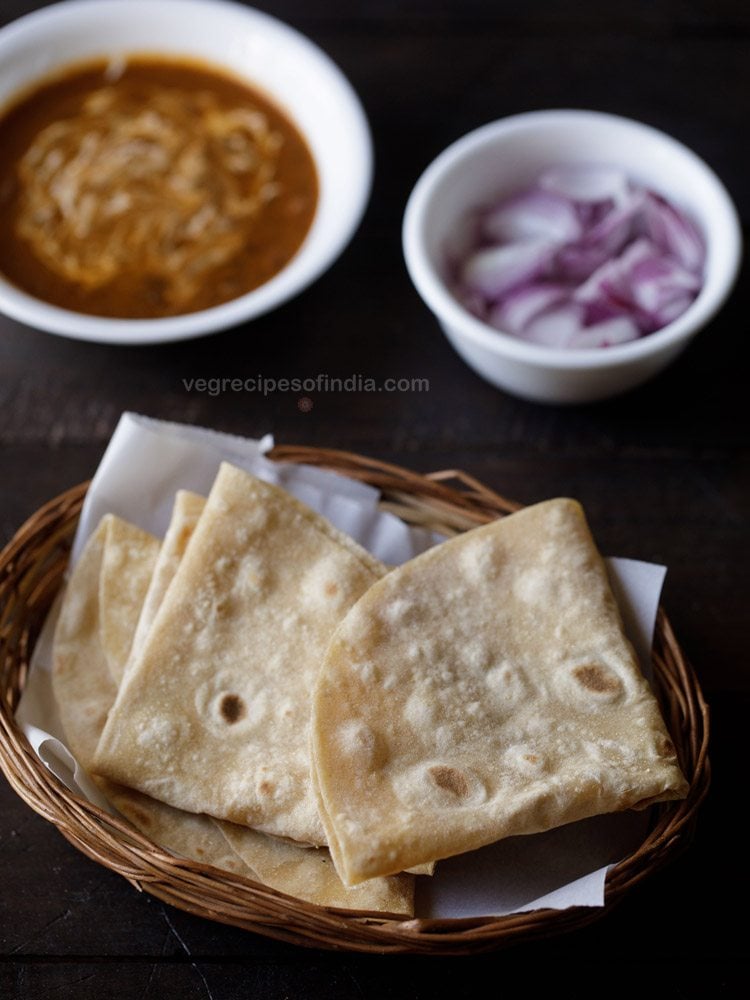
How to make Rumali Roti
Make Dough
1. In a large bowl or a parat (wide rimmed plate), take 2 cups (240 grams) whole wheat flour and ½ cup + 3 tablespoons (80 grams) all-purpose flour or maida.
Also, add 1.5 teaspoon salt or as required.
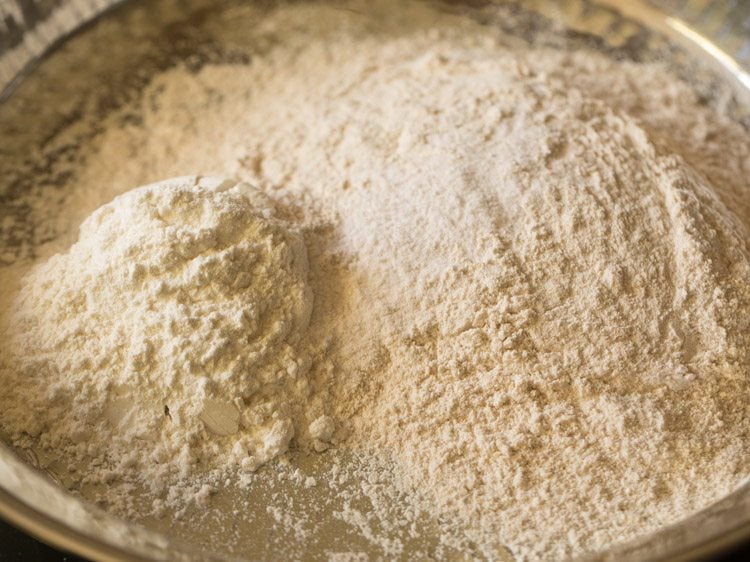
2. Add 1.25 to 1.35 cups water in parts or intervals.
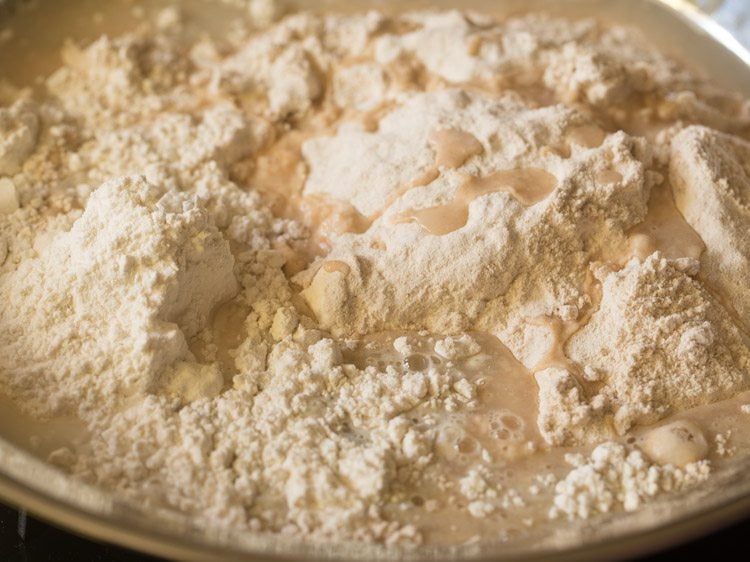
3. Mix and begin to knead.
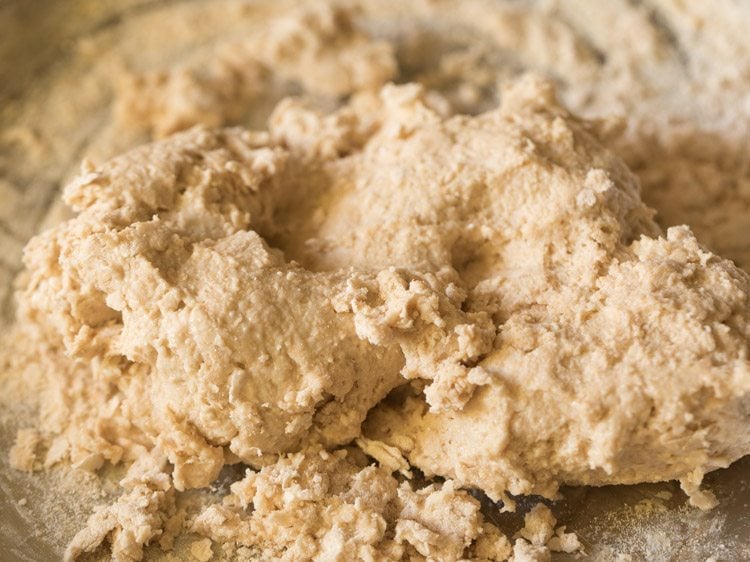
4. Adding water in parts, knead to a slightly sticky dough.
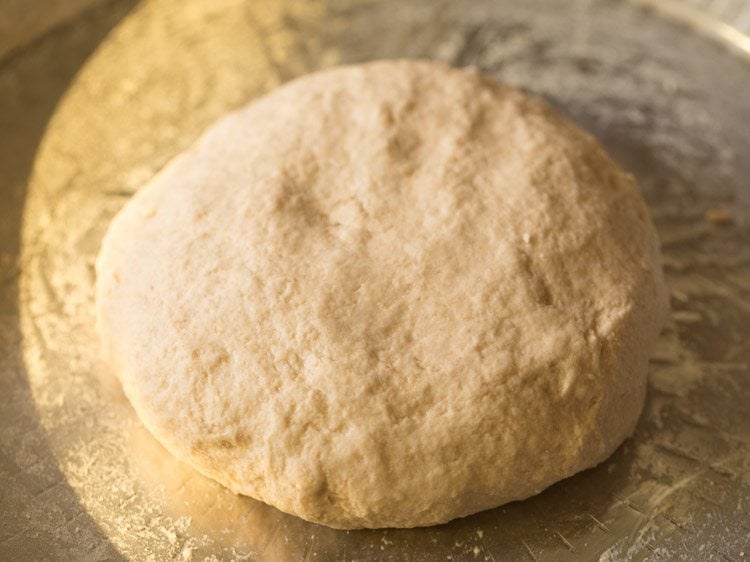
5. Cover the dough with a moist cotton napkin or muslin. Keep aside for 30 minutes.
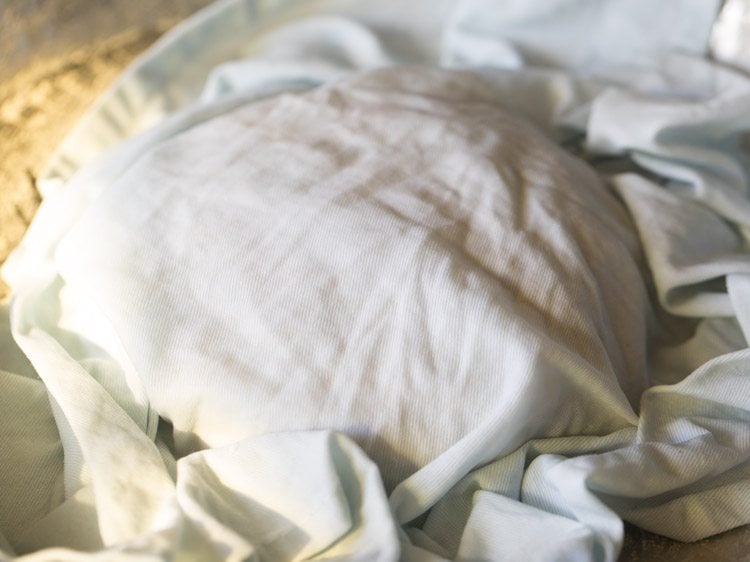
6. After 30 minutes, knead the dough again.
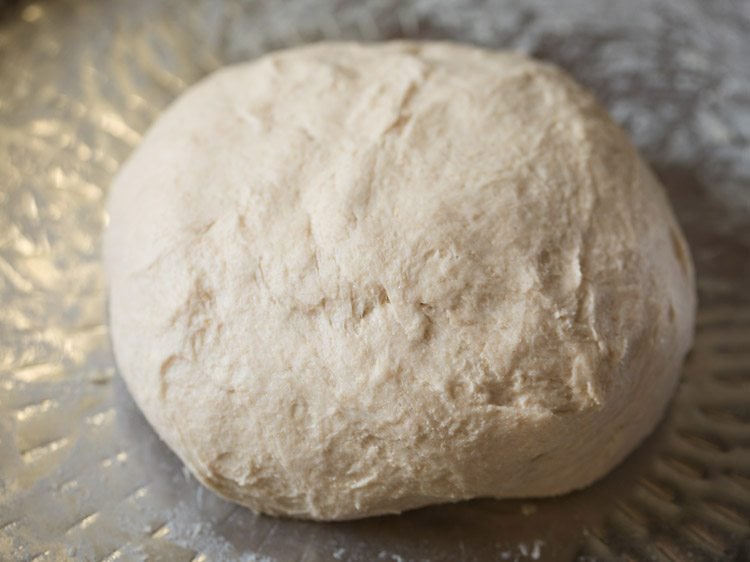
Roll Rumali Roti
7. Make medium sized balls from the dough. Cover with the moist cotton napkin and keep aside.
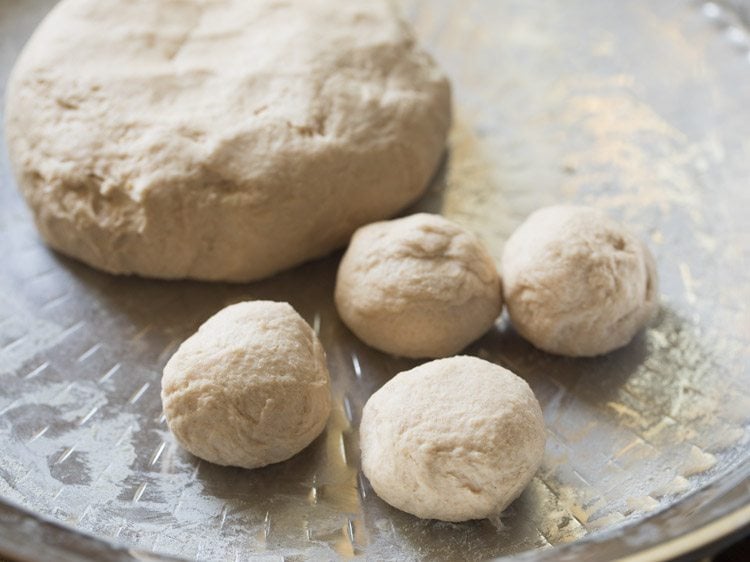
8. Take a dough ball and sprinkle some whole wheat flour all over.
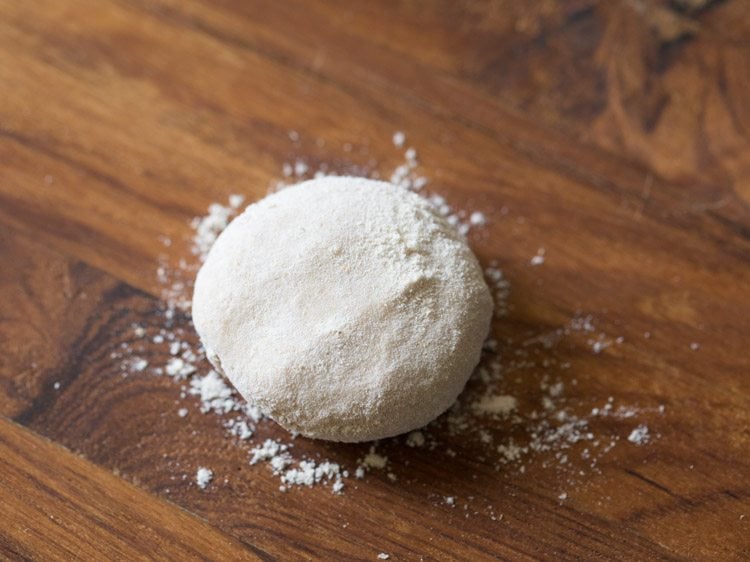
9. With a rolling pin, begin to roll the dough.
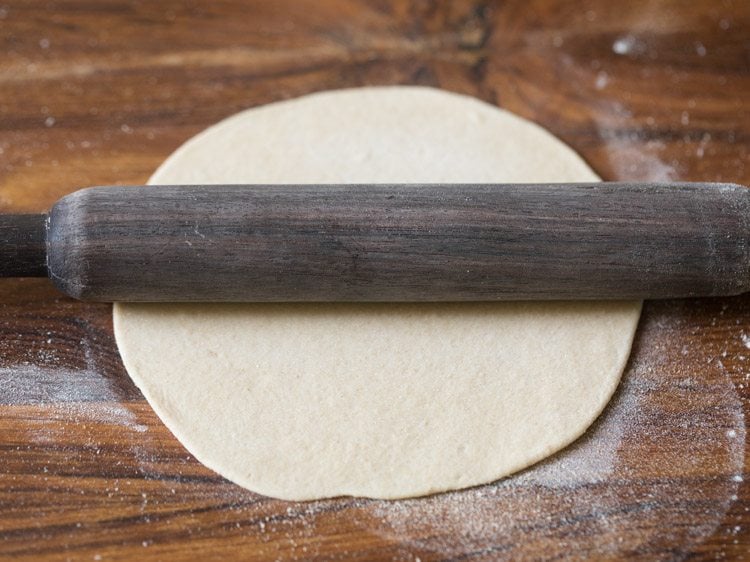
10. While rolling, sprinkle flour evenly all over, if the dough sticks or gets sticky. Roll to thin rotis having 11 to 12 inches diameter. Do not add too much flour while rolling.
Add only enough flour which will help in rolling. If there is a lot of flour covering the rotis, then the rotis will become hard.
Roll to thin and slightly transparent rotis. Also, roll evenly and keep edges thin, if they become thick.
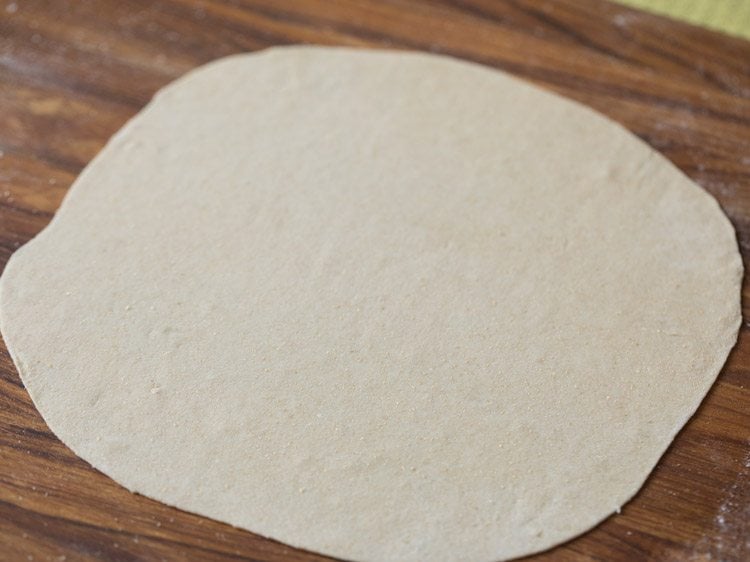
Coo Rumali Roti
11. Now, invert a concave tawa or kadai with a long handle. Its better to have a handle on the tawa. Keep the heat to medium or medium-high.
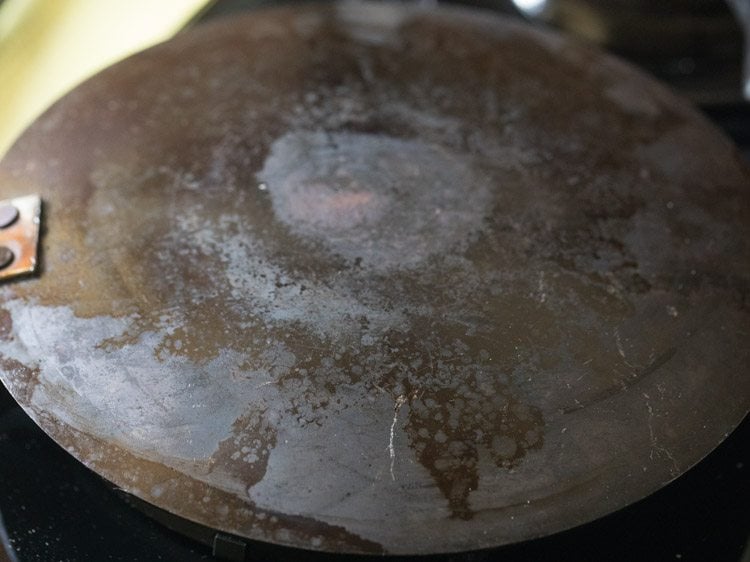
12. Sprinkle some flour on the tawa. If it becomes golden, then the temperature is fine on the tawa. In case it burns quickly, then reduce the heat.
Wipe off this roasted flour from the tawa with a folded cotton napkin.
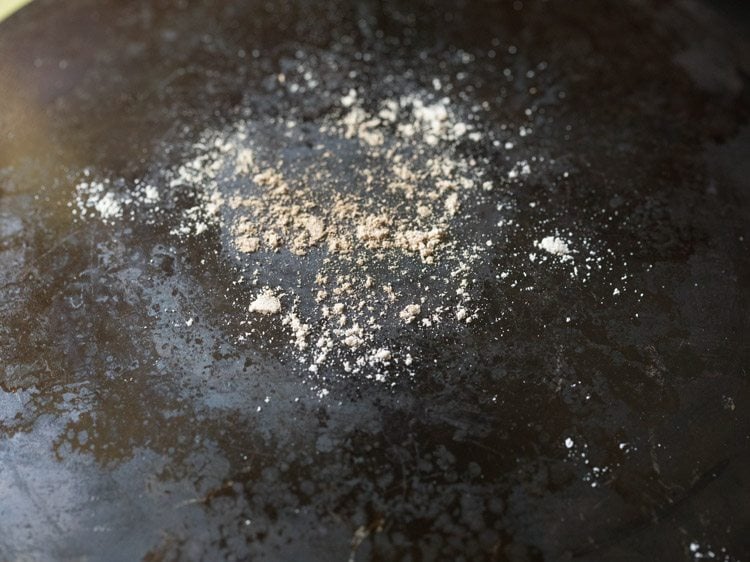
13. Gently place the roti on the inverted tawa. Be careful as the tawa is very hot.
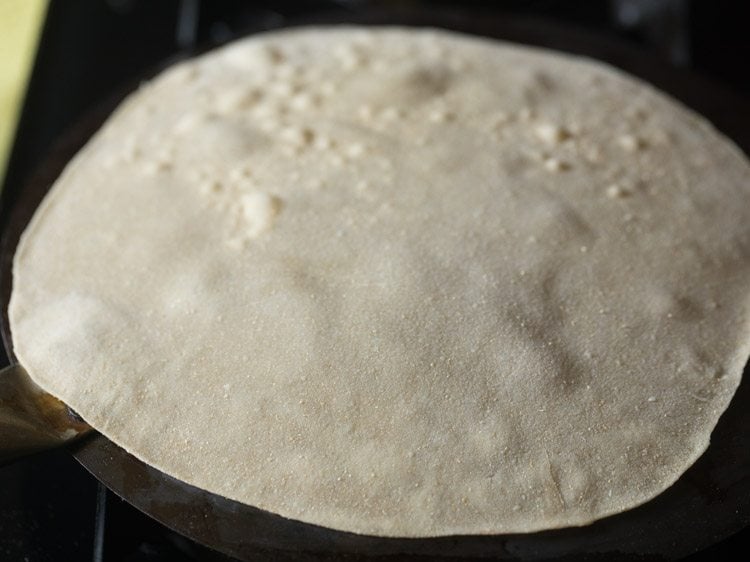
14. Begin to roast roti on medium to medium-high heat. You will see small bubbles appearing on the roti.
With a clean folded cotton napkin, press the edges, center and sides so that the roti gets cooked. The cooking time includes the time taken for pressing the roti also.
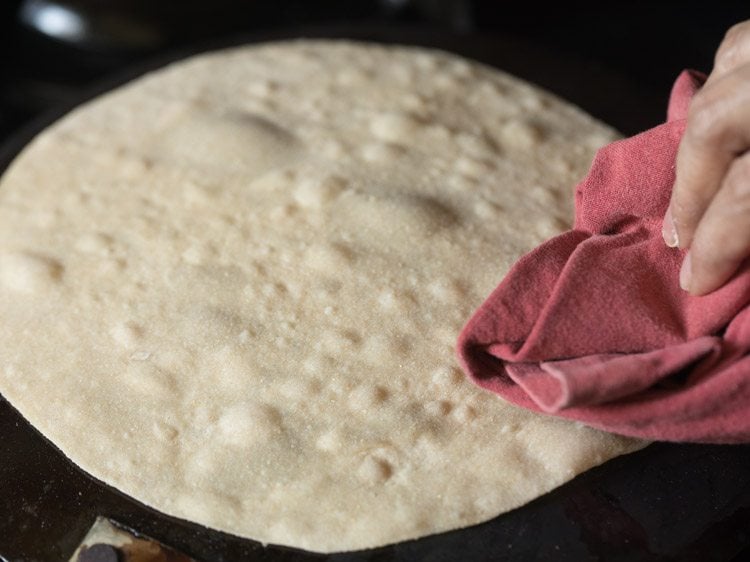
15. Roast for 40 to 45 seconds or till you see bubbles all over. Do not cook too much or the rotis will become hard like papads.
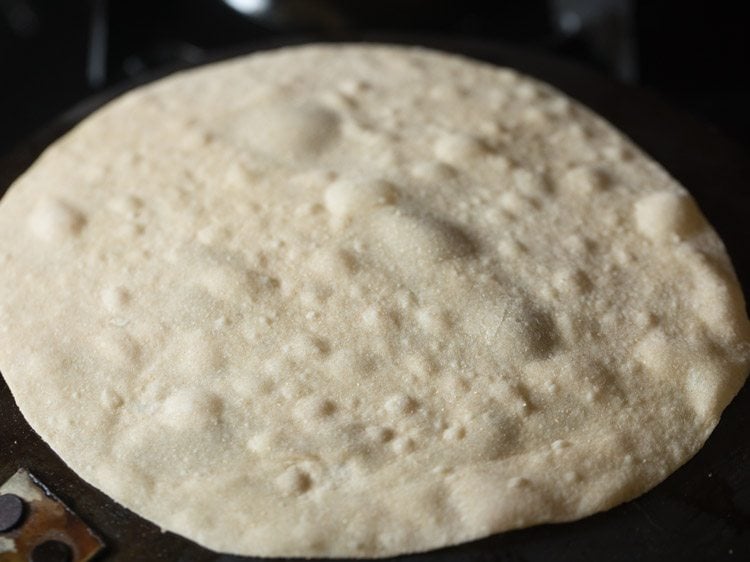
16. Then, flip with the help of tongs and roast the other side. There will be some blisters on the roti. At this step too, press the roti with the napkin.
Cook the second side for 30 to 35 seconds. The cooking time includes the time taken for pressing the roti also. Timing will vary depending on size, thickness of pan and heat intensity.
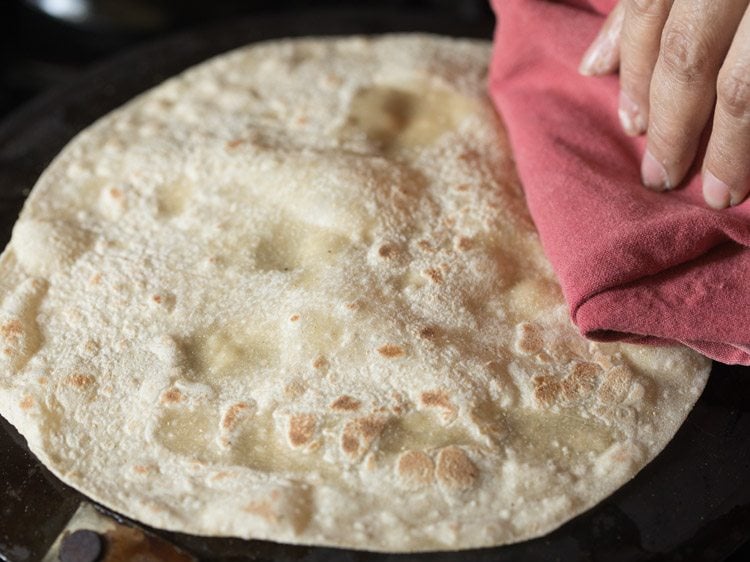
17. Flip and place on a plate. You can spread some oil or ghee on the Rumali Roti, if you want.
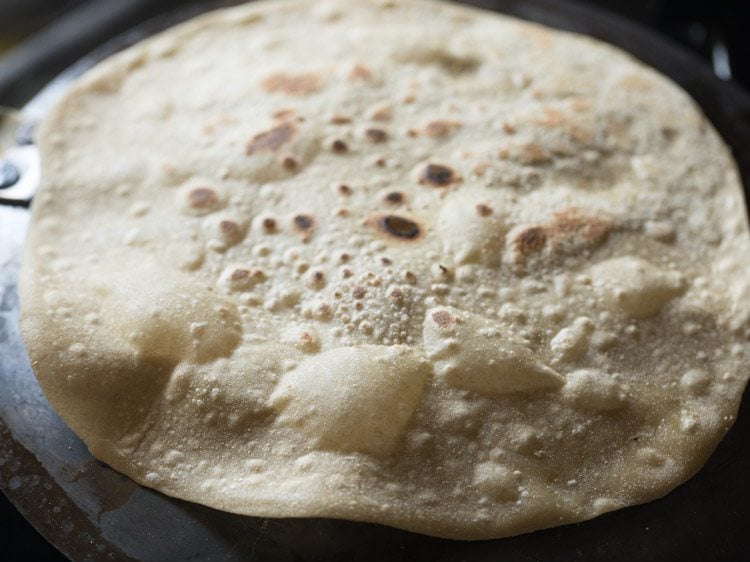
18. Then, fold with the help of tongs and serve immedietaly, or else they will become chewy. This way, make all Roomali Rotis in batches.
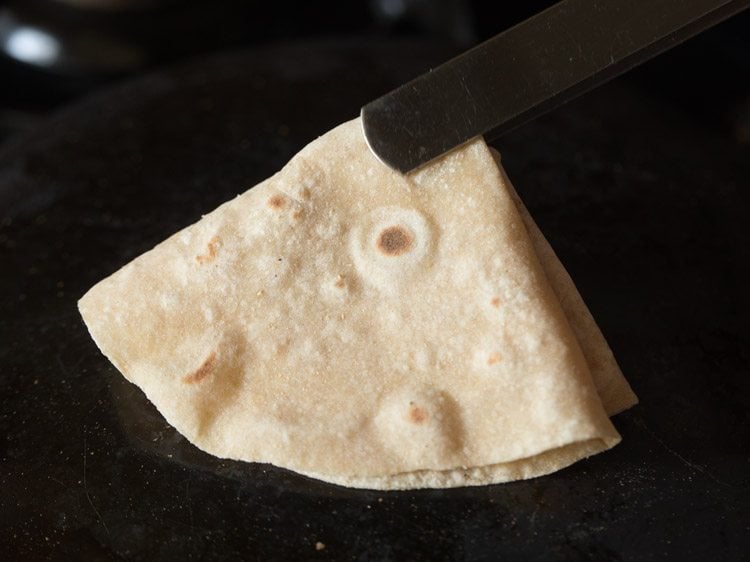
19. Serve Roomali Roti hot with North Indian main course of dal or curries like Chana Dal, Paneer Butter Masala, Rajma Masala, Dal Makhani, Palak Paneer, etc.
Serve these rotis hot and as soon as you prepare them. If you keep them for longer, they will become chewy and won’t give you a nice mouth-feel.
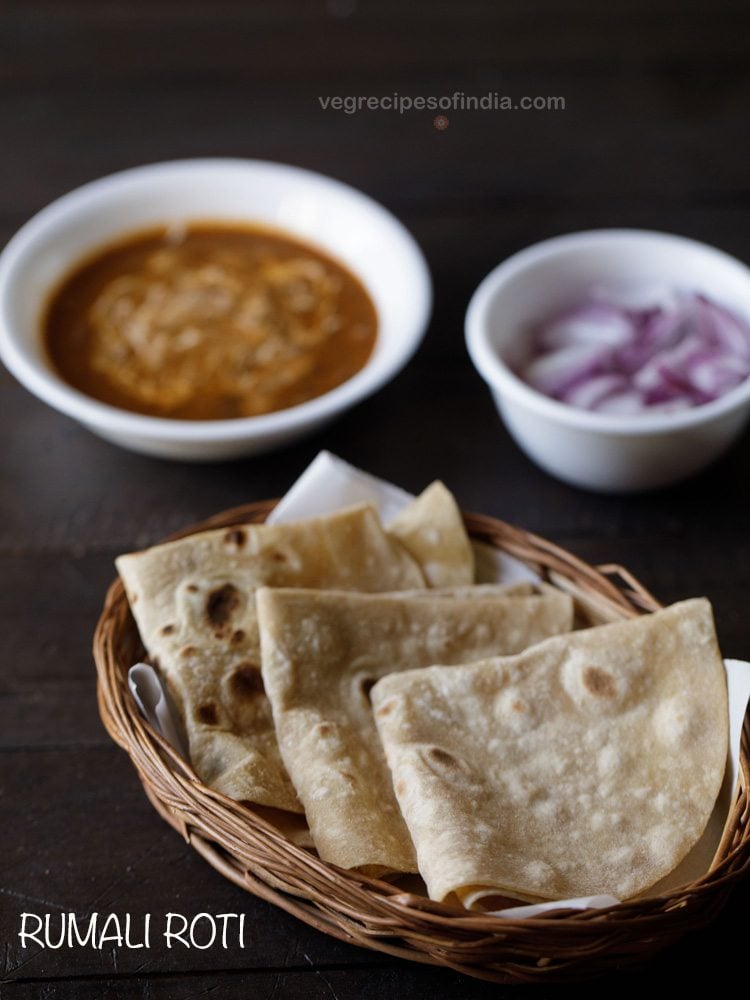
Expert Tips
- Dough Texture: Make sure to knead the dough very well. The dough should be smooth but also slightly sticky.
- Rolling: While rolling, sprinkle flour evenly so as to get thin, slightly transparent rotis. Do not add too much flour as this will result in hard rotis. Also, roll evenly and keep edges thin, if they become thick.
- Pans: You can make these rotis both on an inverted concave shaped tawa with a handle or a kadai (wok) with a round bottom. Make sure the kadai or wok does not have a flat bottom. You can even make on a skillet or tawa without inverting them. For best results, use a heavy iron tawa or a cast iron skillet.
- Cooking Temperature: Before roasting the rotis, make sure the temperature of the tawa is right. To check, sprinkle some flour on the tawa. If it becomes golden, then it’s the right temperature. If it burns quickly, then reduce the heat. Before cooking the rotis, wipe off this roasted flour from the tawa with a folded cotton napkin.
- Cooking Rotis: Do not over roast or over cook the rotis as then they become hard like papads. On the face of it, a Roomali Roti looks uncooked, but it is not uncooked. Since the roti is made thin, it does get cooked. So, don’t worry, as you won’t have any digestion issues.
More Roti Recipes To Try!
Indian Breads
Indian Breads
Indian Breads
Indian Breads
Please be sure to rate the recipe in the recipe card or leave a comment below if you have made it. For more vegetarian inspirations, Sign Up for my emails or follow me on Instagram, Youtube, Facebook, Pinterest or Twitter.
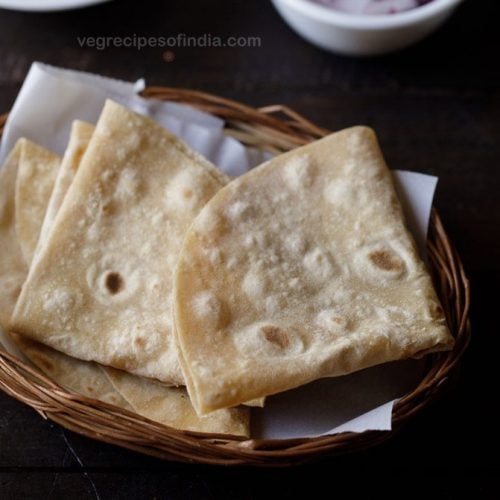
Roomali Roti | How To Make Rumali Roti
Ingredients
- 2 cups whole wheat flour – 240 grams
- ½ cup + 3 tablespoons all purpose flour – 80 grams
- 1.5 teaspoon salt or add as required
- 1.25 to 1.35 cups water for kneading
Instructions
Kneading dough
- In a large bowl or a parat (wide rimmed plate) take the whole wheat flour all purpose flour.
- Also add 1.5 teaspoon salt or add as required.
- Add 1.25 to 1.35 cups water in parts or intervals.
- Mix and begin to knead. Adding water in parts knead to a slightly sticky dough.
- Cover the dough with a moist cotton napkin or muslin. Keep aside to rest for 30 minutes.
- After 30 minutes again knead the dough.
- Make medium sized balls from the dough. Cover with the moist cotton napkin and keep aside.
Rolling rumali roti
- Take a dough ball and sprinkle some whole wheat flour all over.
- With a rolling pin begin to roll the dough.
- While rolling sprinkle flour evenly all over if the dough sticks or gets sticky. Roll to thin rotis having 11 to 12 inches diameter.
- Do not add too much flour when rolling. Add only enough flour which will help in rolling. If there is a lot of flour covering the rotis, then the rotis will become hard.
- Roll to thin and slightly transparent rotis. Also roll evenly and keep edges thin if they become thick.
Making roomali roti on inverted tawa or kadai
- Now invert concave tawa or kadai with a long handle. It is better to have an handle on the tawa. Keep the heat to medium or medium-high.
- Sprinkle some flour on the tawa. If its become golden, then the temperature is fine on the tawa. If it burns quickly as soon as you add flour, then reduce the heat.Wipe off this flour from the tawa with a folded cotton kitchen napkin carefully.
- Gently place the roti on the inverted tawa.
- Begin to roast roti on medium to medium-high heat. You will see bubbles appearing on the roti. With a clean folded cotton napkin, press the edges, center and sides so that the roti gets cooked.
- Roast for 40 to 45 seconds or till you see bubbles all over. Do not cook too much or the rotis get a hard texture.
- Then flip with the help of tongs and roast the other side. At this step too press the rumali roti with the napkin. Cook the second side for 30 to 35 seconds. Timing will vary depending on size, thickness of pan and flame intensity.
- Flip and place in a plate. You can spread some oil or ghee on the rumali roti if you want.
- Then fold with the help of tongs and serve hot. This way make all roomali roti in batches. Serve the rotis hot or else they become chewy.
- Pair Roomali Roti with any North Indian main course of dal or curries.
Notes
- Add water as needed to make a soft and slightly sticky dough.
- You could use a concave shaped tawa with a handle or a kadai (wok) with a round bottom to cook the rumali roti. If you have neither of these, then simply cook the rotis on a flat skillet or tawa.
- While I have used a mix of whole wheat flour and all-purpose flour, you could simply use only all-purpose flour if you prefer.
Nutrition Info (Approximate Values)
This Roomali Roti recipe post from the archives first published on February 2018 has been republished and updated on December 2022.
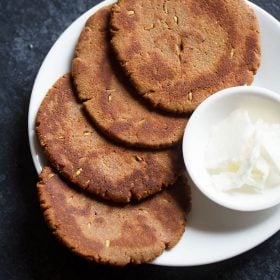
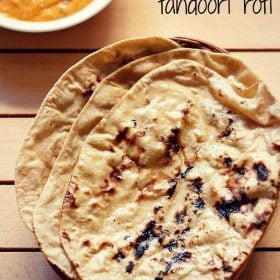
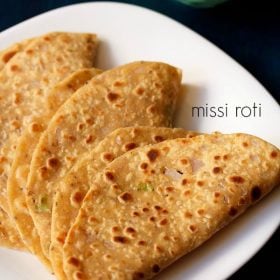
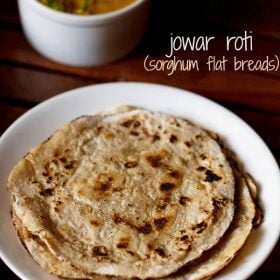
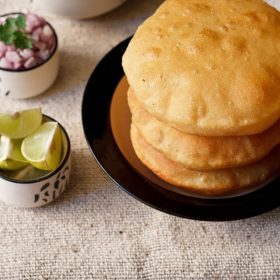
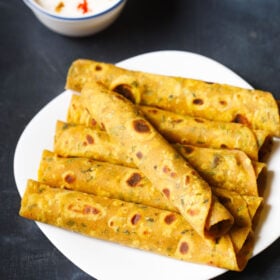
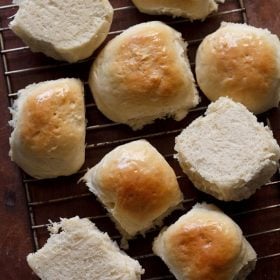
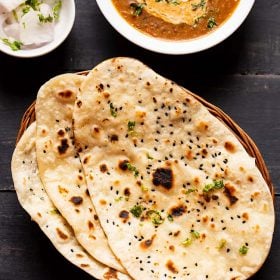








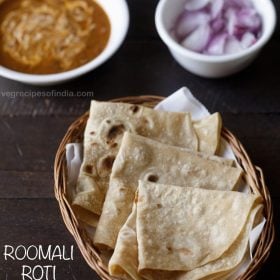
Thanks Dassana. I always ask for this when I’m in a restaurant so it’s great to know how to make it.
I’m usually cooking for one and I like to freeze in portions. Is this something I could freeze and would I freeze it as dough or after cooking it?
Thanks
Welcome Steve. Yes of course you could freeze these. Partly cook the roti. Place each roti between parchment and stack them in a freezer safe container or box. Before cooking thaw them and roast until cooked through.
Hi
Dassana
I am following you since 2010 when I was in class 12 . I have learnt so much from you , I have used your app I think which is now discontinued I have learnt my favourite hobby from you your are my inspiration for food .
Hi Nidhi, thanks a lot for your kind words and appreciation. Felt nice to read your comment. By the way we removed our app. Thanks again.
Hi Dassana,
I’ve got celiac disease which means I cannot have anything with gluten in it. Do you have any advice on a substitute for wheat flour to make pooris, rotis and roomali rotis?
miriam, you can easily substitute wheat flour with various millet flours, rice flour etc to make poori and roti. i have shared some roti and poori recipes made with bajra flour, jowar flour, buckwheat flour, rice flour.
This is not exactly a comment for any particular recipe. Just my observation. I find that the photographs of the recipes are not easy on the eyes. They are too ‘into the eyes’. May be leaving some margin outside of the subject (bowl, pan etc) would make it easier to see.
thanks for the suggestion. at times we tend to take close up shot so that the texture or consistency of the food preparation process is clearly visible to the readers. however we have noted down your point and will keep it in mind when taking photos.
Ur recipes are awesome. Just luv them
Thanks Nandita